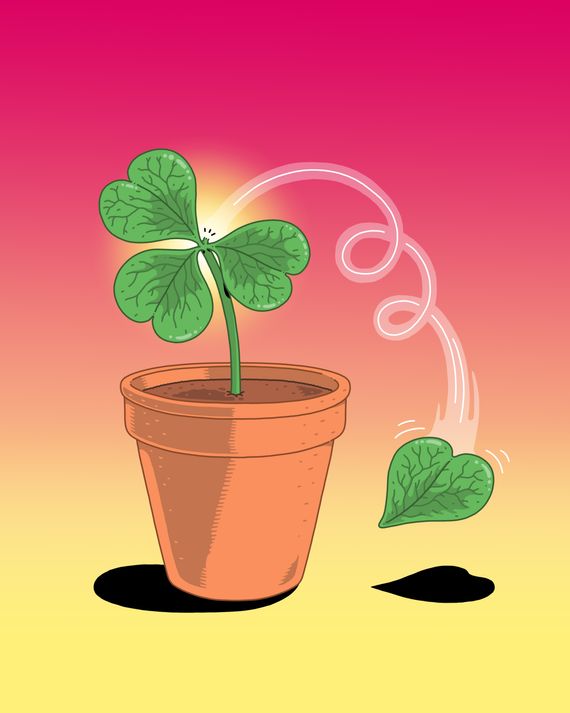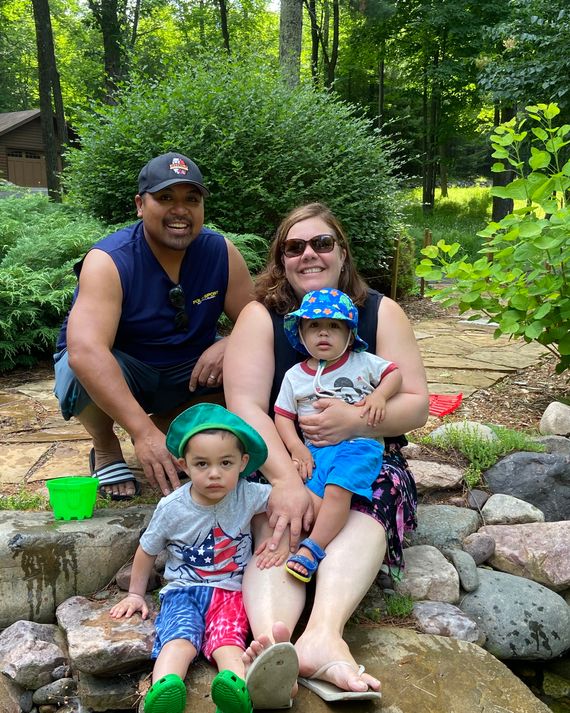
Illustration: Olivier Heiligers
It was a Saturday morning — August 8, 2020 — and 44-year-old Carlo was on the pickleball court near his home in Minnesota, where he liked to play pickup games with whoever happened to show up. It was nice to be out of the house and rare to be on his own. Carlo had just spent three weeks on intensive dad duty to his two toddler boys; the three of them were sick and quarantining while Carlo’s wife, Megan, an oncology nurse, went to work. When everyone was feeling better, Megan and her sister took the boys three hours north to their parents’ cabin to let Carlo have a weekend to himself. That morning, he FaceTimed the kids briefly to persuade one of them to eat breakfast.
Then, around 9:30 a.m., Carlo collapsed. There were about 40 players on the court that day, and one of them called 911, but none of them attempted CPR. Nine and a half minutes later, the paramedics arrived and began resuscitation attempts, which continued at a nearby hospital.
Meanwhile, Megan had thrown her half-dressed boys in the car and was speeding home, her sister in the driver’s seat while Megan received regular updates on the phone from her friend Alicia, an emergency nurse she had called and asked to stay with Carlo at the hospital. She heard the medical team’s futile attempt to resuscitate her husband. And then she heard what, to her, was an unmistakable sound: the asystole alarm. Carlo had flatlined. “We’re in the car, with my 1- and 2-year-old, and all of a sudden I’m a widow,” said Megan, now 45. “I remember turning around and looking at the boys and my sister, and thinking, What am I going to do?”
Her husband had died after a sudden cardiac arrest, electrical chaos in the heart that triggers an irregular heart rhythm and causes blood circulation, pulse, and breathing to immediately cease without warning. It’s different from a heart attack, which is caused by a blockage of blood flow to the heart and is usually accompanied by telltale warning signs like chest tightness or pain in one or both arms. On the pickleball court that day, Carlo dropped to the ground so abruptly that some of the players assumed, at first, that he’d injured his ankle. It’s likely Carlo didn’t know what was happening any more than they did: For the sufferer, the first sign of cardiac arrest is often loss of consciousness.
Sudden cardiac arrest kills 436,000 Americans each year, and on a global scale, it is more deadly than colorectal cancer, breast cancer, prostate cancer, influenza, pneumonia, auto accidents, HIV, firearms, and house fires combined, according to the American Heart Association. It can strike young, apparently healthy adults, even professional athletes, and more often than not (80 percent of the time, in fact), it occurs outside of a hospital. In January 2023, Buffalo Bills fans watched this in terrifying real time as safety Damar Hamlin collapsed on the field, seemingly out of nowhere. Later that year, Bronny James — the then-18-year-old son of LeBron James — collapsed on the basketball court during a USC summer workout. Both events turned out to be cardiac arrests, and both men were revived thanks to fast-acting medical teams who used CPR and an automated external defibrillator, or AED. But most who suffer from cardiac arrest outside of a hospital don’t receive this kind of care; 90 percent will die, and usually within ten minutes.
“There is no other disease that affects man where you die that quickly,” said Dr. Sumeet Chugh, vice-dean and chief AI health research officer at Cedars-Sinai Health System in Los Angeles.
And yet, historically, funding for scientific research on cardiac arrest has been low when compared to other diseases with similar rates of death and disability in the United States. In 2019, research presented at an American Heart Association symposium found that for each year of life lost due to disease, the National Institutes of Health invests $284 for diabetes, $89 for stroke, and just $7 for cardiac-arrest research. It’s as if sudden cardiac arrest is met with a resigned shrug: If it’s nearly impossible to predict and even harder to treat, what’s the use?
“This is the unacknowledged epidemic in the United States,” said Dr. Michael Kurz, who studies resuscitation science and specializes in emergency medicine at UChicago Medicine. He compared it to stroke: The past three decades have seen a decline in the death rate from strokes due to improvements in prevention and treatment. “We’ve turned a corner there,” he said. “We have not turned that corner for cardiac arrest, where modern society has decided that there’s something to do.”
Meanwhile, research published last December in the Journal of the American Heart Association suggests that deaths from cardiac arrest have increased over the past two decades in American adults ages 25 to 44. The authors based their paper on two decades’ worth of mortality data, like death certificates, from the U.S. Centers for Disease Control and Prevention. But some in the field, like Chugh, dispute that the rate of cardiac death in young people has increased, taking issue with the authors’ data using death certificates, and instead say it has held steady. In 2004, he led a study showing that death certificates often inaccurately recorded sudden cardiac deaths. This can happen because the death certificate is filled out by a coroner who may not have medical training or by a medical professional who lacks the familiarity with cardiovascular disease that’s necessary to recognize sudden cardiac death. Chugh has developed a comparatively labor-intensive system of tracking these deaths in a project called the Oregon Sudden Unexpected Death Study, for which he has partnered with the directors of emergency medical services first in Portland, Oregon, in 2002, and in California’s Ventura County in 2015. Over the years, that study has found, among other things, gender differences in sudden cardiac-arrest risk factors, as well as EKG markers that indicate increased risk in the general population.
While the quarrel over these findings may at first seem like run-of-the-mill academic infighting, a closer look reveals it as a strong example of both the mystery and frustration that continue to surround sudden cardiac arrest.

Carlo, Megan, and their two children on July 4, 2020, just a month before Carlo died while playing pickleball.
Photo: courtesy of Megan Castillejos
Everyone responds to grief differently. Tina Rexing, Carlo’s sister, transformed for a time into something of an amateur medical investigator, trying to uncover why her brother had died and if anything could have saved him in the moment. “I kind of felt like I was on CSI,” she said of the many hours she spent piecing together her brother’s death on the court. She tracked down a photo of Carlo playing pickleball ten minutes before his collapse, and she’s seen pictures and video of him on the ground. She consulted a psychic; she got a copy of the medical examiner’s report.
Even for medical experts, predicting who will have a sudden cardiac death is a detective-drama-level puzzle. There are risk factors, including heart issues like coronary artery disease, stroke, congestive heart failure, genetic predispositions, and congenital heart-structure problems, as well as the typical causes of poor American health, such as obesity, diabetes, smoking, and a diet high in fast and processed foods. Lately, narcotics and stimulants have been floated as potential sources of increased risk, and researchers are looking into energy drinks and antidepressants as well. For more than a third of those who go into cardiac arrest, including those who die of it, no cause of the arrest is ever identified. For some people, and especially women, their first (and only) symptom of heart disease is dying from sudden cardiac arrest.
Misconceptions and rumors about cardiac arrest and sudden death are prevalent, too. A 2023 KFF survey found that about one in three Americans believe COVID vaccines cause sudden death in otherwise healthy people, even though research has not established that link. Still, in May, the FDA said it would require Pfizer and Moderna to use expanded warning labels concerning cardiac issues — including myocarditis, a major cause of sudden cardiac death — on their COVID vaccines.
To some who study sudden cardiac death, the puzzle to solve is much bigger than cardiovascular health and thus requires broader solutions. “What looks like a cardiac crisis is really more like a public-health crisis — maybe superimposed on an equity crisis,” said Dr. James Guseh, a cardiovascular physician-scientist at Massachusetts General Hospital. Guseh wrote an accompanying editorial published alongside the AHA report, which also found racial and regional differences in sudden cardiac death. (Black and Hispanic people were more likely to die than white people, and so were those in the South as compared to the rest of the country. These populations tend to have higher rates of cardiovascular disease and are also less likely to receive bystander CPR as compared to white people.) Guseh added, “If we want to reverse the trends there, we need to focus less on genetic conditions and more on treating addiction, improving CPR access, and closing regional and racial health-care gaps.” The AHA study included deaths from drug overdoses that lead to cardiac arrest, which may explain why the study found such a drastically increased death rate in younger adults.
From the medical examiner’s report, Tina learned her brother’s heart had been in bad shape before his sudden death, with near-complete blockage of his major arteries, indicating coronary artery disease (a common cause of sudden cardiac death in those under 50). Her family has a history of heart disease (the siblings’ dad had a triple bypass surgery at age 49), and though Carlo had recently lost around 40 pounds, he had a personal history of obesity, had type 2 diabetes, and was on medication for high blood pressure and high cholesterol. He was vigilant about taking his medication and seeing doctors regularly, says Megan, his wife. None of his health issues ever indicated to any of them that Carlo might drop dead on a random Saturday morning; she says that possibility had never crossed their mind, and as far as she knows, had never been raised to Carlo.
Who, exactly, will suffer an arrest has long been thought to be virtually unpredictable. “In the past, sudden cardiac death was a black box,” Chugh told me. Still, it’s possible that one day, these events won’t seem so terrifyingly random.
In the last decade, research from the Oregon Sudden Unexpected Death Study has suggested that for about half of people who experience cardiac arrest, there are warning signs immediately prior to the event, but they are not well publicized and often incredibly subtle. In one study, researchers identified 839 sudden cardiac-arrest patients and worked backward, poring over interviews with friends, family members, and bystanders and obtaining previous medical records. It turned out that about half of those patients did experience symptoms (shortness of breath, dizziness, chest pain), but for the most part, they were easy to brush off, and in the study, most people did just that. “They basically said, Oh, it was something I ate, or I just went to the gym and I worked too hard and my chest is hurting,” said Chugh, who was a senior author on that study. Just 81 of them called 911, a decision that made them more than five times more likely to survive the arrest as compared to those who did not call 911.
It would be extreme to suggest that every person who experiences symptoms like these should treat them as emergencies. “If everyone who has chest pain or everyone has shortness of breath starts calling 911, within an hour, the entire emergency system of the city is going to grind to a halt,” Chugh said. But pair these symptoms with a person’s individual health profile, and the question of whether or not to call starts to become clearer. Chugh and others recently published a paper identifying 13 predictors of sudden cardiac arrest, including heart failure and diabetes as well as certain markers on electrocardiograms, which could help doctors identify people at risk who could be helped by an implantable cardioverter defibrillator, or ICD.
Some scientists are betting on AI to come through with a breakthrough for sudden cardiac-death prediction and prevention. New, federally funded research led by Johns Hopkins University scientists tested how well an AI model could predict the risk for sudden cardiac death in patients with hypertrophic cardiomyopathy, a common inherited heart disease that affects about one in 500 people and increases the likelihood of sudden cardiac death. Current clinical guidelines for this population helps doctors correctly predict an individual’s risk for sudden cardiac death about half the time. You may as well flip a coin, in other words. But according to this study, the results of which were published earlier this month in Nature Cardiovascular Research, the AI model was nearly 90 percent accurate in identifying the patients most at risk. The authors argue that their model, which they named MAARS (short for Multimodal Artificial Intelligence for Ventricular Arrhythmia Risk Stratification), would allow clinicians to personalize care for their patients, protecting those who are most at risk and avoiding unnecessary interventions for those who are not. Improved prediction and prevention efforts could take the pressure off the current system, which essentially relies on whoever happens to be nearby when a person collapses to identify what is happening and take action.
In the years since Carlo’s death, both Megan and Tina have thought a lot about the nine and a half minutes that passed between the 911 call and the ambulance’s arrival. “I was pissed off that no one did CPR, and I needed something to tell me that it might not have worked, anyway,” says Tina. Megan adds, “He never had a chance.” Women are 14 percent less likely than men to receive bystander CPR, and Black and Hispanic people are 37 percent less likely than white people to receive bystander CPR. (Carlo was Filipino.) The chance of survival is dismal at best when it happens outside of a hospital, but some have better odds than others.
When the heart stops pumping blood, it also means that vital organs — including the brain — have lost their oxygen supply. Brain activity stops within seconds, as does respiration. Without blood flow and oxygen, the cells of the body begin to die. “The most common cause of death from cardiac arrest is, in fact, brain death,” Kurz said. “I can restart a young person’s heart. The problem is how much damage they’ve had to their brain.”
The pickleball players didn’t recognize Carlo was in cardiac arrest — most laypeople don’t, Kurz said — and they worried it would be dangerous to attempt CPR, which might have saved his life. He’s still breathing, they told each other, assuming he must have had a seizure. But those breaths turned out to be agonal respiration — the end-of-life gasps that occur when the brain and body are denied oxygen. Carlo’s arrest happened suddenly and his death followed quickly. But for a few critical moments, he wasn’t yet gone.
Sign Up for the Intelligencer Newsletter
Daily news about the politics, business, and technology shaping our world.
Vox Media, LLC Terms and Privacy Notice
Related

